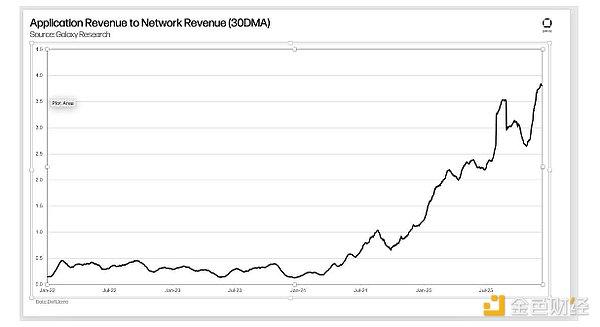Tether starts issuing USDT loans
I know I say this a lot, but I just want to emphasize that Tether, the large stablecoin issuer, is doing an excellent business. It is an unregulated bank, pays no interest, rates are rising, and its depositor base is fairly stable. As of the end of June, Tether reported approximately $86.5 billion in assets, most of which were U.S. Treasury bonds to support approximately $83.2 billion in Tether. Increase compared to the previous quarter: Tether briefly suffered a run during last year’s crypto winter, but it was not too severe and has recovered well; crypto investors still want to keep their funds in Tether .
Anyway, if you are a Tether operator, you don’t need to worry about the risk of runs . Tether invests primarily in short-term safe assets, which now pay very high interest rates. By simply investing your Tether funds in overnight loans backed by U.S. Treasuries, at overnight financing rates, you can earn a yield of about 5.3%, or about $4.6 billion per year, completely risk-free and with almost no fees. If someone brings Tether and asks to exchange dollars, you can give them dollars directly; your investments are short-term and liquid. This is a wonderful business.
This means that if you were in charge of Tether and someone came to you proposing a smart investment that would bring higher returns, even if there was only a little risk , you should plug your ears and yell "no" and kick them out of your office. You can make billions of dollars in pure profit without taking any risk! No credit risk (buying T-bills), no term risk (buying very short-term T-bills), no liquidity risk (T-bills can be easily sold if someone withdraws money), no risk at all, 5% interest.
This problem - how to use funds - may be an existential problem for real banks! We had discussed that in order to make enough money to run its business, Silicon Valley Bank needed to take investment risks, so it put money into long-term Treasury bonds thinking they were safe, but then there was a run on the bank and SVB collapsed. I feel sorry for them; they have to take risks to make money. But Tether doesn’t need it! Not at all, it would be a bit unreasonable for Tether to lend $100 to Apple Inc.
However, Tether’s publicly disclosed balance sheet isn’t exactly the safest thing you can imagine. In the Wall Street Journal, Jonathan Weil reports:
Tether Holdings has restarted lending its own stablecoin to customers, after saying less than a year ago it would stop the practice.
In its latest quarterly financial update, the cryptocurrency issuing company said its assets included $5.5 billion in loans as of June 30, up from $5.3 billion in the previous quarter. A company spokesperson confirmed Tether made the new loan.
The company, registered in the British Virgin Islands, described the loans as secured and did not disclose details about the borrowers or the collateral accepted. Loans are issued and denominated in the company’s Tether token…
The resumption of lending differs from December 2022, when the company said it would reduce its secured loans to zero in 2023. "During the second quarter of 2023, we received a number of short-term loan requests from customers with whom we have established long-term relationships, and we decided to honor these requests," Tether Holdings spokesman Alex Welch said.
She said the loans will be eliminated in 2024. She said the company's goal is to "prevent our clients from experiencing a significant reduction in liquidity or the need to sell their collateral at potentially unfavorable prices, resulting in losses."
Welch declined to explain why the company's clients might need to sell their collateral at unfavorable prices or whether Tether Holdings made new loans this year to help clients avoid defaults.
The point I made above is that there is no financial reason for Tether to need these loans. Anyone on Tether can become very wealthy and live an easy life just by putting all their money in treasury bonds.
Extended reading: Tether Transparency Report: Excess reserves of US$3.3 billion; but USDT market value shows signs of “recession”!
A Tether spokesperson made the same point here: Tether does not lend because it wants to, or because it thinks it would be a good financial decision for Tether. Tether lends money to support its borrowers. Someone out there - maybe a cryptocurrency exchange or trading firm, etc. - had some collateral (maybe a very volatile cryptocurrency) and wanted to borrow USD (in the form of Tether), and Tether Holdings was the one they could find The cheapest and most accessible lenders. Someone in the crypto space needs funds to purchase (or continue to hold) their cryptocurrency, and Tether will provide the funds, secured by the cryptocurrency, not because it is a good deal for Tether, but because Tether is becoming the crypto ecosystem A good citizen of the system and supporting its counterparties.
Tether's borrowers are large cryptocurrency investors who want to obtain financing for their cryptocurrency collateral, and if their liquidity is exhausted, they will need to "sell their collateral at potentially unfavorable prices, resulting in losses." If large cryptocurrency companies receive margin calls and have to sell off their assets, that will drive the price of the cryptocurrency downward. Lending to them benefits not only them, but the entire crypto ecosystem : it prevents price drops caused by sell-offs.
We have discussed Tether’s lending activities before. A common form of crypto-skeptic conspiracy theory in recent years goes something like this: “Tether is a self-sufficient reserve bank for cryptocurrencies that dynamically prints Tethers to maintain the price of cryptocurrencies. At the margins , cryptocurrencies are not purchased by real people putting new dollars into crypto systems, but by crypto hedge funds using newly printed Tethers." (Editor's note: From this perspective, large crypto hedge funds borrow Tether , and used these loans to buy various cryptocurrencies, thereby pushing up the market value of the entire market. But in the process, no new money entered the market, so it was a self-propelled bubble.)
Does the Tether spokesperson’s remarks prove this to some extent?
(End of original article)
Editor's note: Tether responded to this
Paolo Ardoino, chief technology officer of Tether, issued a statement saying that it was wrong to report in the Wall Street Journal (and the same Bloomberg article) that Tether is increasing external USDT loans, and that Tether is working to reduce guaranteed loans.







